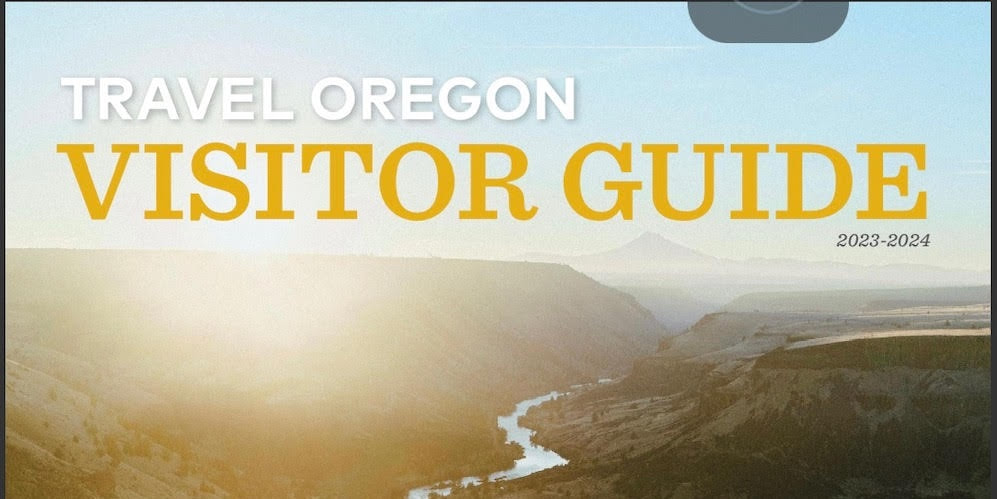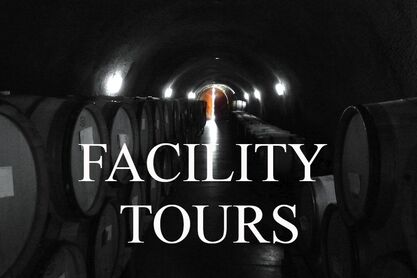What makes the Willamette Valley so Unique?
2 Great Floods:
Viticulture in Oregon was present as early as the mid-1800s .
After spending most of the 20th century as a haven for hazelnut growers and turkey farmers, pino Noir was planted in the nineteen sixties and Oregon began to capture the greater wine world’s attention. This territory now belongs to the pino grape and those who admire it...
Today, Oregon is a leader in Pino Noir production with other varieties growing in importance.
Chardonnay, pino gri and pino blonc in particular have made significant strides in quality and sophistication in the last decade.
You can blame David Lett. He was the 25-year-old who rolled in from California 50 years ago with a trailer full of vine cuttings and a crazy dream about something called pino. And now the Willamette Valley is never going to be the same.
And excuse me that I can't pronounce, Willamette Valley.
What makes the North Willamette Valley wine growing region so unique?
Location, location, location –Pino Noir, Pino Gri and Chardonnay grow beautifully in Oregon’s cool climate regions, which sit between the North 42nd and 46th parallels. The 45th parallel in both hemispheres offers conditions for delicate grapes to develop balanced, concurrent, ripening of sugar, acid, tannin and flavor.
Once upon a time, 16 million years ago . . .
Geologic history and soils – Oregon’s exciting geologic history is filled with grand scale natural phenomenon–
volcanic eruptions, shifting tectonic plates, and skyscraper high ice age flood waters.
Volcanic Eruptions:
Blame the volcanoes of the Northwest, that sent so much lava roaring through this valley, and set the stage.
The Willamette Valley creation started about 16 million years ago, when in far eastern Washington and Oregon, very fluid lava erupted from very unusual volcanoes, called Columbia River basalt floods, and flowed west over portions of Idaho, Washington, Oregon and the northern part of what is now the Willamette Valley.
These eruptions were amongst the most massive on earth, emanating originally from the Yellowstone super volcano hot spot, which was located underneath Oregon at that time.
During this period Basaltic Lava flowed right over the top of this Valley.
Starting about five million years ago, mass tectonic uplift started to occur, and the collision of the Pacific Plate and the continental plate created what is now the Coast Range. One of the many, ripple effects, of all of this land movement was the uplift of the north Willamette Valley floor, creating the hills our vineyards and wineries call home. So too did a Mount Hood explosion 10,000 years ago, resulting in a top layer of soil in this region of volcanic black silt loam, rich in nutrients that contribute to the complexity and aromatics of the wines.
The Great Missoula Ice-Age Floods:
You can blame the Columbia River Basalt Floods for making the Willamette Valley so unique. Or, you can blame the glaciers of Montana, for forcing flood waters (the ice-age floods; Also known as the Missoula Floods), 14,000 years ago, that carried in so many tons of rich dirt from Washington and Montana.
Further defining our Viticulture area (or appellation), was the catastrophic Missoula Floods, known as the greatest known floods on the planet...
These floods happened about 14,000 years ago, and caused by a glacier, heading south, clogging rivers near Missoula, Montana.
Lake Missoula would grow into a very large lake, the size of Great Lakes Lake Michigan and Lake Huron combined. An inland sea.
A break in the ice dam caused the catastrophic flood known now as the Missoula floods, happening many times over a period of about 2000 years.
The ice dam burst forth the water from Lake Missoula at a rate of ten times the flow of, ALL the rivers of the world.
That's right, ten times the flow of ALL the rivers of the world.
This event scattered debris across the Willamette Valley and helped to carve the Columbia River Gorge, and nourish the Willamette Valley.
It rushed down from Montana eventually filling the Valley to a depth of about 300 feet. It laid down a thick layer of sediment over the Willamette Valley, covering all elevations below 300 feet. Anything below 300 feet was a sedimentary soil, while anything above remained predominantly Jory (volcanic) soil.
This flood also formed Lake Willamette (also known as Lake Allison), referring to the 300-square-mile lake that briefly covered the entire Willamette Valley during this time. Lake Willamette was formed when these floods washed down from Lake Missoula, scouring away the topsoil from eastern Washington (aka Washington Scablands) and depositing much of it here in the Willamette Valley, making this a uniquely fertile land that produces an abundance of fruits, nuts, berries and wine grapes.
The shores of Lake Willamette extended as far south as Eugene, and are marked by numerous iceberg-rafted erratics (flood & glacier transported rocks).
PAUSE
PAUSE
PAUSE
FLOOD ERATICS:
Two ice-rafted flood erratics in the Willamette Valley are particularly interesting.
1. The Bellevue Erratic is a large block of Belt metamorphic rock with an original weight of 160 tons.
It would have taken a very large iceberg to carry this from Washington or Montana! Or Canada!
Located in Erratic State Park between McMinnville and Sheridan, the 160-ton block of Belt argillite was rafted across four states in a huge chunk of glacier torn from the ice dam.
2. The Willamette Meteorite, found nearby among other flood debris, most likely fell on the Cordilleran ice sheet in Canada, was carried to the Missoula Lake dam site in the glacier and was likewise ice-rafted to the Willamette Valley in the Missoula flood. Thus the largest meteorite ever found in the U.S.A. may be just a Canadian import.
Over the course of millennia, these events have defined not only the beautiful topography and landscape of Oregon, but also its unique soils, which defines our viticulture areas and brings complexity to these fine wines.
And last, Climate – Oregon summers are filled with abundant sunshine, yet nights remain cool, sometimes with temperature swings approaching 40 degrees Fahrenheit. This strong diurnal swing allows grapes to achieve daytime ripening while retaining vital acidity during the night, creating a natural balance within the grape. Oregon is probably better known for its abundant rainfall, most of which falls during winter and spring. This abundance of water allows for the dry farming of vineyards all across the state, forcing vines to develop deep taproots, which contribute to complexity and phenolic development
Viticulture in Oregon was present as early as the mid-1800s .
After spending most of the 20th century as a haven for hazelnut growers and turkey farmers, pino Noir was planted in the nineteen sixties and Oregon began to capture the greater wine world’s attention. This territory now belongs to the pino grape and those who admire it...
Today, Oregon is a leader in Pino Noir production with other varieties growing in importance.
Chardonnay, pino gri and pino blonc in particular have made significant strides in quality and sophistication in the last decade.
You can blame David Lett. He was the 25-year-old who rolled in from California 50 years ago with a trailer full of vine cuttings and a crazy dream about something called pino. And now the Willamette Valley is never going to be the same.
And excuse me that I can't pronounce, Willamette Valley.
What makes the North Willamette Valley wine growing region so unique?
Location, location, location –Pino Noir, Pino Gri and Chardonnay grow beautifully in Oregon’s cool climate regions, which sit between the North 42nd and 46th parallels. The 45th parallel in both hemispheres offers conditions for delicate grapes to develop balanced, concurrent, ripening of sugar, acid, tannin and flavor.
Once upon a time, 16 million years ago . . .
Geologic history and soils – Oregon’s exciting geologic history is filled with grand scale natural phenomenon–
volcanic eruptions, shifting tectonic plates, and skyscraper high ice age flood waters.
Volcanic Eruptions:
Blame the volcanoes of the Northwest, that sent so much lava roaring through this valley, and set the stage.
The Willamette Valley creation started about 16 million years ago, when in far eastern Washington and Oregon, very fluid lava erupted from very unusual volcanoes, called Columbia River basalt floods, and flowed west over portions of Idaho, Washington, Oregon and the northern part of what is now the Willamette Valley.
These eruptions were amongst the most massive on earth, emanating originally from the Yellowstone super volcano hot spot, which was located underneath Oregon at that time.
During this period Basaltic Lava flowed right over the top of this Valley.
Starting about five million years ago, mass tectonic uplift started to occur, and the collision of the Pacific Plate and the continental plate created what is now the Coast Range. One of the many, ripple effects, of all of this land movement was the uplift of the north Willamette Valley floor, creating the hills our vineyards and wineries call home. So too did a Mount Hood explosion 10,000 years ago, resulting in a top layer of soil in this region of volcanic black silt loam, rich in nutrients that contribute to the complexity and aromatics of the wines.
The Great Missoula Ice-Age Floods:
You can blame the Columbia River Basalt Floods for making the Willamette Valley so unique. Or, you can blame the glaciers of Montana, for forcing flood waters (the ice-age floods; Also known as the Missoula Floods), 14,000 years ago, that carried in so many tons of rich dirt from Washington and Montana.
Further defining our Viticulture area (or appellation), was the catastrophic Missoula Floods, known as the greatest known floods on the planet...
These floods happened about 14,000 years ago, and caused by a glacier, heading south, clogging rivers near Missoula, Montana.
Lake Missoula would grow into a very large lake, the size of Great Lakes Lake Michigan and Lake Huron combined. An inland sea.
A break in the ice dam caused the catastrophic flood known now as the Missoula floods, happening many times over a period of about 2000 years.
The ice dam burst forth the water from Lake Missoula at a rate of ten times the flow of, ALL the rivers of the world.
That's right, ten times the flow of ALL the rivers of the world.
This event scattered debris across the Willamette Valley and helped to carve the Columbia River Gorge, and nourish the Willamette Valley.
It rushed down from Montana eventually filling the Valley to a depth of about 300 feet. It laid down a thick layer of sediment over the Willamette Valley, covering all elevations below 300 feet. Anything below 300 feet was a sedimentary soil, while anything above remained predominantly Jory (volcanic) soil.
This flood also formed Lake Willamette (also known as Lake Allison), referring to the 300-square-mile lake that briefly covered the entire Willamette Valley during this time. Lake Willamette was formed when these floods washed down from Lake Missoula, scouring away the topsoil from eastern Washington (aka Washington Scablands) and depositing much of it here in the Willamette Valley, making this a uniquely fertile land that produces an abundance of fruits, nuts, berries and wine grapes.
The shores of Lake Willamette extended as far south as Eugene, and are marked by numerous iceberg-rafted erratics (flood & glacier transported rocks).
PAUSE
PAUSE
PAUSE
FLOOD ERATICS:
Two ice-rafted flood erratics in the Willamette Valley are particularly interesting.
1. The Bellevue Erratic is a large block of Belt metamorphic rock with an original weight of 160 tons.
It would have taken a very large iceberg to carry this from Washington or Montana! Or Canada!
Located in Erratic State Park between McMinnville and Sheridan, the 160-ton block of Belt argillite was rafted across four states in a huge chunk of glacier torn from the ice dam.
2. The Willamette Meteorite, found nearby among other flood debris, most likely fell on the Cordilleran ice sheet in Canada, was carried to the Missoula Lake dam site in the glacier and was likewise ice-rafted to the Willamette Valley in the Missoula flood. Thus the largest meteorite ever found in the U.S.A. may be just a Canadian import.
Over the course of millennia, these events have defined not only the beautiful topography and landscape of Oregon, but also its unique soils, which defines our viticulture areas and brings complexity to these fine wines.
And last, Climate – Oregon summers are filled with abundant sunshine, yet nights remain cool, sometimes with temperature swings approaching 40 degrees Fahrenheit. This strong diurnal swing allows grapes to achieve daytime ripening while retaining vital acidity during the night, creating a natural balance within the grape. Oregon is probably better known for its abundant rainfall, most of which falls during winter and spring. This abundance of water allows for the dry farming of vineyards all across the state, forcing vines to develop deep taproots, which contribute to complexity and phenolic development















